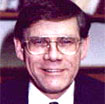The third and final article based on the Process Preaching seminar that Pastor Larson has taught for the past five years in the Kairos Program at Luther Seminary.
When I began searching for a way to preach my sermons freely, I came across the suggestion that doing so would require a great deal of oral rehearsal. In the past I tried orally rehearsing my sermons by reading them with very little success. I could read them just about as well the first time through as the last time through. This led me to try a different kind of oral rehearsal that enabled me to move from reading my manuscripts to preaching them freely. In this column I will describe how these oral rehearsals or run-throughs, are done.
1. Location
Choose a place for your run-throughs that is completely private. It should approximate as close as possible the place in which you will be delivering your sermon. The best place to do the run-throughs is in the space you plan to preach. If the sanctuary is available and can remain private during your rehearsal time, that would be a great place for this process.
2. Time
You need to set aside between one and two hours for doing your run-throughs. Orally rehearsing a twenty-minute sermon normally takes about an hour and a half. It may take a little longer at first just because you are not used to doing it. The closer to the time of delivery that these run-throughs are done the better it is. The ideal situation is to do your oral rehearsals right before you preach. The particular kind of memory used for this process has a shelf life of about twenty-four hours. After twenty-four hours, the memory of what you wrote and the oral language you came up with during your run-throughs will fade. After forty-eight hours you will remember very little of it.
3. The Technique
You begin the run-through process by looking at the first section you have written. Perhaps you are beginning your sermon with a story or a retelling of the text. Read this section to yourself (not out loud). Next, step aside from your manuscript or look away from it, and try to say what you have written (out loud). It is important to do this out loud as it does not work as well when you mouth the words to yourself. If it is a story, try to tell the story without reading it or looking at it. Chances are you will not get very far into the story or the retelling of a text before you have to go back and check your manuscript. Now, circle a few words, underline some things, or put some numbers or stars here and there. Then, step aside and try to say it again. You may not get very far, and you will start thinking that this is impossible to do. Then go back for a third time and look at your written text. Now turn away again and try to speak it freely.
4. Three is the Charm
It is at this moment that a little miracle takes place. All of a sudden, your brain figures out what you are trying to say and converts your written words to oral language. You are now able to remember and speak freely the meaning of your written words. This is true, even though your words, phrases and language might be somewhat different. It takes at least three times through each section of your sermon to be able to speak it freely.
5. Continuing on
After the first section of your sermon has been rehearsed, you move on to the next block or section. To transition into this new section, repeat a sentence or two of the preceding section. Continue to work your way through the sermon taking each section of the sermon and running through it three or four times. It is not necessary to go through the entire sermon from start to finish until the moment of delivery. You know each section, and will have your manuscript to look at if you need to remember what comes next. Remember, you are not memorizing the written words. Each time you run-through the various sections of your sermon they will come out differently. The meaning will be the same even though the words and phrases will change during each run-through and again at the moment of delivery.
Although there are many other important parts to the Process Preaching System, this oral rehearsal process is the key. First, it converts the written language of a manuscript to the oral language of speaking freely. Secondly, it is the key to remembering what you are going to say at the moment of delivery. I realize that taking the time to do these oral rehearsals is a major commitment. I also believe that nothing you could do in the sermon preparation process can make as big a difference in the effectiveness of your preaching.

